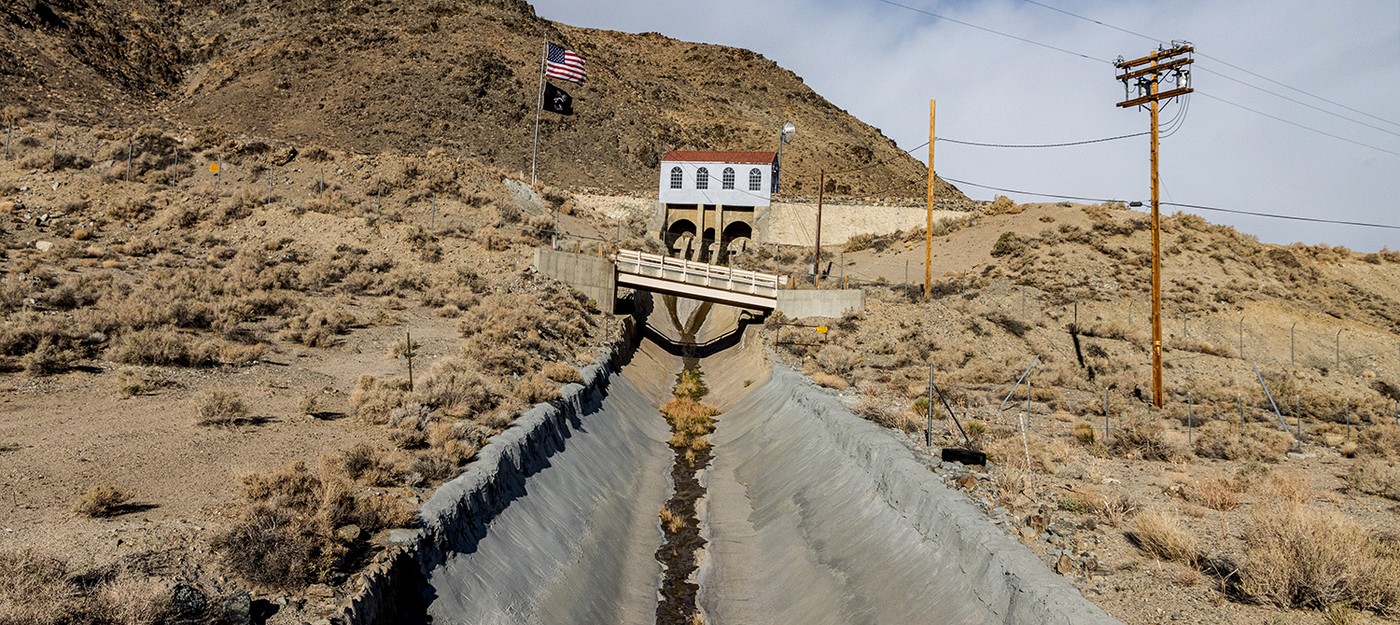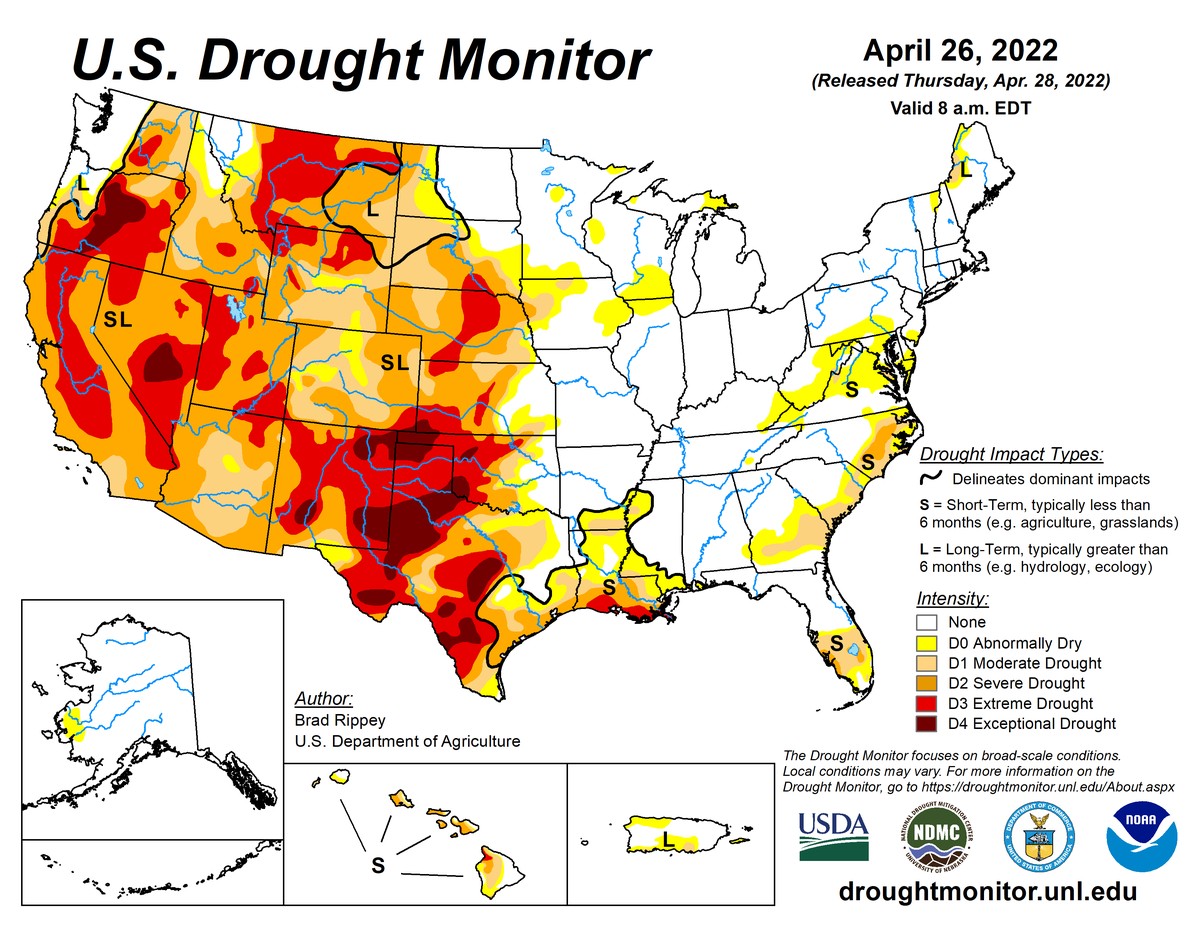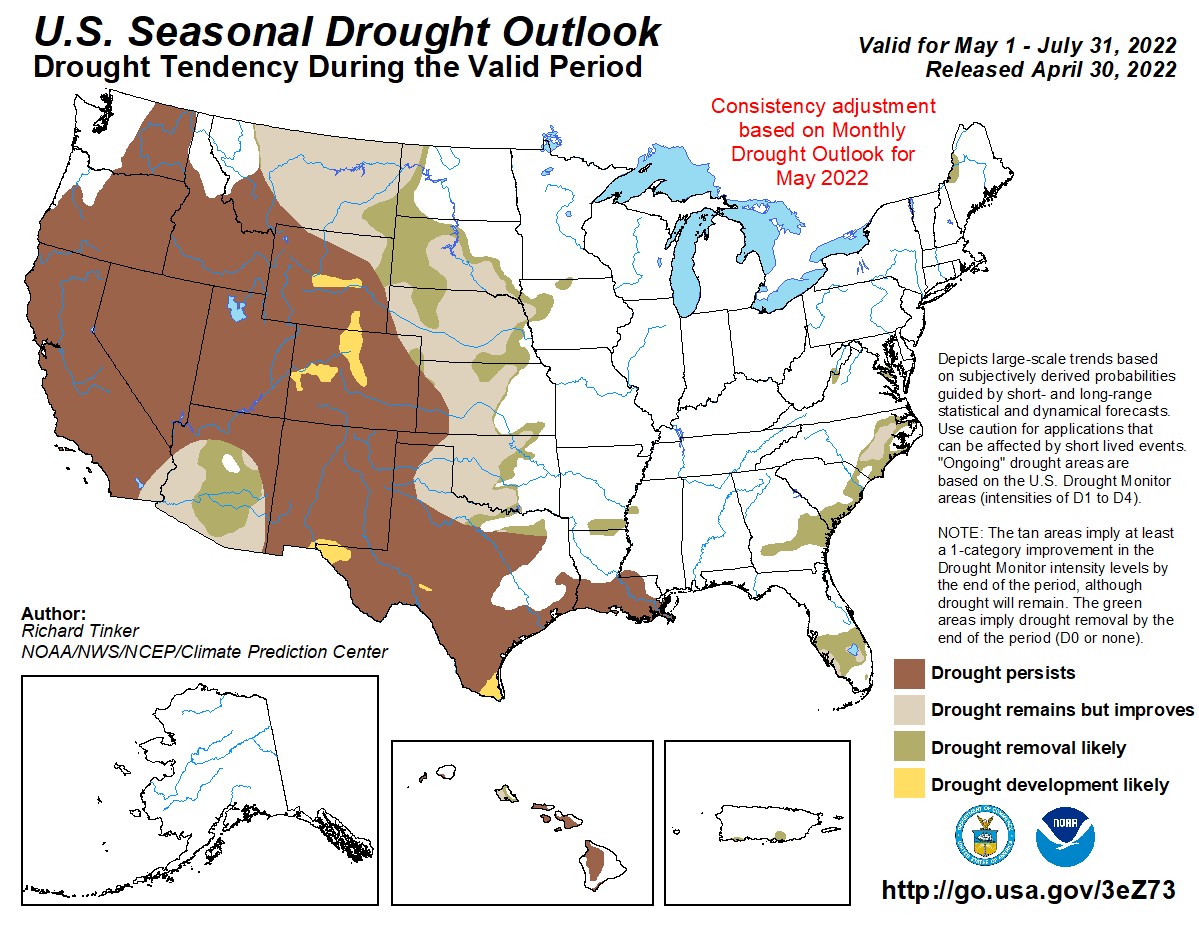Megadrought in America: Most of the western U.S. is suffering effects of climate change

On Aprik 28, 2022 U.S. Drought Monitor posted an update with interactive maps, showing that most of the continental West experiencing drought. Wast expanses from Texas to Oregon are suffering from moderate to extreme droughts, with several areas of exceptional drought. Little or no precipitation fell during the last week across the nation’s southwestern quadrant, leading to further drought intensification.
Climate change makes West hotter and drier, causing water level in reservoirs to drop, and leading to wildfires covering thousands of acres. In the meantime low snowpack levels in the Sierra Nevada forcing officials to implement water conservation measures.

Forecaster Richard Tinker writes:
May is one of the wettest months of the year across the Plains, northern Rockies, and western Great Lakes Region. Heavy precipitation is in fact forecast for at least for early May in these areas, likely bringing some improvement to a large area in the Nation's mid-section and the northern High Plains.
In other drought areas across the western half of the country, drought is expected to persist or intensify, with some expansion into the parts of the Rockies not currently experiencing drought. In the eastern half of the country, most areas of drought are expected to improve, excepting in parts of South Carolina and Georgia. There, May is slightly drier than some other months, and there are no indications that any precipitation will be sufficient to improve conditions. In addition, drought conditions across Hawaii are expected to change very little during the month.

Nearly all areas in drought from the central Plains westward to the Pacific Coast should persist or intensify, expanding to cover the entire region outside central Arizona and part of the Pacific Northwest. The only areas expected to improve are in the northern High Plains due to heavy precipitation early in the period, and across much of Arizona late in the period with the onset of the monsoon season.

As NOAA reports, abnormal dryness and drought are currently affecting over 131 million people across the United States including Puerto Rico — about 42.2% of the population.
Last week South California officials asked about 6 million residents to limit outdoor watering to once a week, and reduce water consumption by 35%, equating to 80 gallons (300 Liters) per person per day. If the drought persists, by September the state authorities may introduce a full outdoor watering ban.
Current list of water-wasting activities in South California include:
Applying water to outdoor landscapes that causes runoff onto adjacent property, non-irrigated areas, private and public walkways, roadways, parking lots, or structures
Using a hose to wash motor vehicles unless the hose is fitted with a shutoff nozzle or device that causes it to cease dispensing water immediately when not in use
Applying water to driveways and sidewalks
Using water in a water feature, except where the water is part of a recirculating system
Applying water to outdoor landscapes during and within 48 hours after measurable rainfall (0.25 inches)
Irrigating outside of new construction without drip or microspray systems
Irrigating landscape between the hours of 8 a.m. and 6 p.m., and irrigating outside of approved watering days for districts observing Stage 2 restrictions